Genetics and evolution of sexual orientation
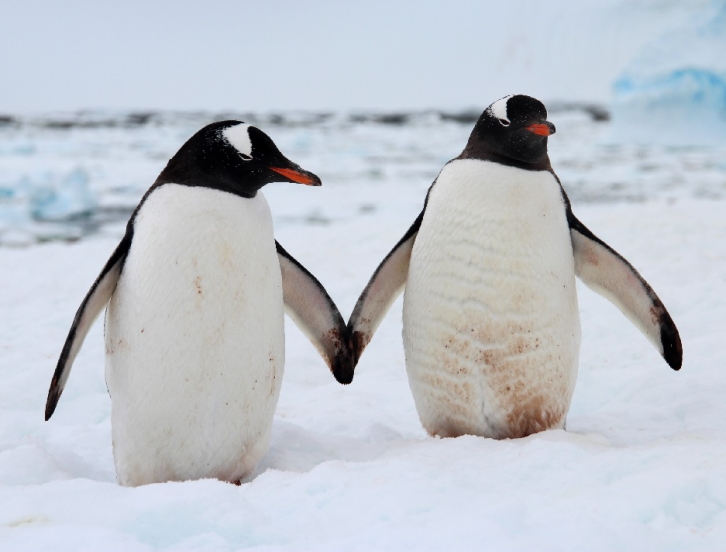
Theo Murphy meeting organised by Professor Vincent Savolainen, Professor Sergey Gavrilets and Professor Nathan Bailey
Homosexuality is common in animals and humans, but the biological foundations of such behaviour are unknown. Instead, as offspring are not produced, it is considered a Darwinian paradox. This meeting confronted genetic mechanisms and socio-evolutionary models underlying sexual orientation, in light of recent genomic findings, and with the aim to provide a modern, science-led synthesis on this topic.
Attending this event
This meeting has taken place.
Enquiries: contact the Scientific Programmes team
Organisers
Schedule
Chair

Professor Nathan Bailey, St Andrews University, UK

Professor Nathan Bailey, St Andrews University, UK
Professor Nathan W Bailey is an evolutionary biologist at the University of St Andrews. He studies adaptive evolution from behavioural and genomic perspectives with particular interest in factors that promote rapid evolutionary change in response to extreme selection pressure. Often such pressure arises from variation in social environments, and his interest in social behaviour has led to investigations into the origins and maintenance of same-sex sexual behaviour in animals.
| 09:00-09:05 |
Welcome by lead organiser
|
|---|---|
| 09:05-09:30 |
The evolutionary history of homosexual behaviour in female Japanese macaques
Multiple studies indicate that female homosexual behaviour in Japanese macaques (Macaca fuscata) is not an adaptation and serves no fitness enhancing function. How do non-adaptive behaviours, like this, evolve? To account for the existence of such a trait, Professor Vasey proposed a four-stage model for the evolutionary history of female mounting in Japanese macaques. The model holds that: (i) play mounting among immature male Japanese macaques evolved to solicit the attention of play partners and prolong interactions; (ii) adult females exploited this evolutionary “loophole” for their own adaptive ends by using female-male mounting to focus their male consort partners’ attention and expedite male-female mounting in a context of high female-female competition for male mates; (iii) females then evolved the capacity to derive sexual reward from female-male mounting via genital stimulation; and, (iv) next, female-female mounting evolved as a neutral by-product of selection for female-male mounting and because females’ could obtain sexual reward during mounts. Once this capacity evolved, females sometimes chose female sexual partners despite the presence of sexually motivated males. The author will discuss research aimed at testing this model which has been conducted over the past two decades. 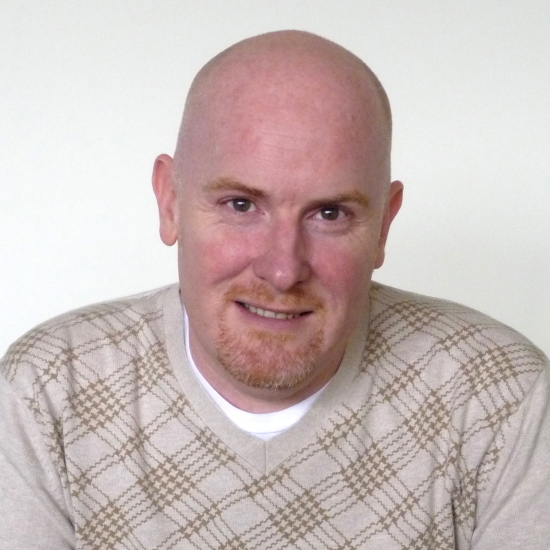
Professor Paul Vasey, University of Lethbridge, Canada

Professor Paul Vasey, University of Lethbridge, CanadaPaul L Vasey is Professor and Board of Governors Research Chair at the University of Lethbridge in Alberta, Canada. For the past three decades, he has conducted cross-species and cross-cultural research aimed at understanding the development, evolution and psychobiology of sexual orientation. Between 1991-2014, he conducted research on Japanese macaques, much of which involved observations of a free-ranging population at Arashiyama, Japan. Since 2003, he has conducted fieldwork in Samoa, a culture where feminine same-sex attracted males are identified as a distinct gender known as fa’afafine. In 2015, he established another fieldsite in the Istmo region of Oaxaca, Mexico, where the indigenous Zapotec people recognize feminine same-sex attracted males as a distinct gender known as muxes. His research has been funded by the Natural Sciences and Engineering Council of Canada and the Social Sciences and Humanities Research Council of Canada. |
| 09:30-09:45 |
Discussion
|
| 09:45-10:15 |
Same-sex sociosexual behaviour is widespread and heritable in male rhesus macaques
Historically, same-sex sociosexual behaviour (SSB) has been labelled a ‘Darwinian paradox’, due to the belief that individuals who engage in SSB will have reduced fitness and be selected against. The authors collected detailed observations across three years of social and mounting behaviour of 236 male semi-wild rhesus macaques, which they combined with a pedigree dating back to 1938 to show that SSB was both repeatable and heritable, while age and group structure explained SSB only marginally. Furthermore, they found no fitness cost to SSB, but show instead that the behaviour mediated coalitionary partnerships associated with likely fitness benefits. Their results lay to rest the Darwinian paradox of SSB by showing how it can evolve, with implications for a more inclusive understanding of the behaviour in nature and society. Vincent Savolainen, Jackson Clive, and Ewan Flintham Georgina Mace Centre for the Living Planet, Department of Life Sciences, Imperial College London 
Professor Vincent Savolainen, Imperial College London, UK

Professor Vincent Savolainen, Imperial College London, UKProfessor Vincent Savolainen is the Director of the Georgina Mace Centre for the Living Planet, a College initiative that brings together a multi-disciplinary group of researchers to tackle some of the greatest environmental challenges. Professor Savolainen is a Fellow of the Zoological Society of London, Fellow of the Linnean Society of London, and a Fellow of the Royal Society of Biology. In 2006, he was awarded the Linnean Society’s Bicentenary Medal. In 2008, he was awarded a European Research Council Advanced Grant, and the following year a Royal Society Wolfson Research Merit Award. In 2014, he was elected a Member of EMBO. His group combines field ecology, molecular phylogenetics, and population genomic approaches to key societal challenges, from explaining the origin of biodiversity to finding solutions for its preservation in a rapidly changing world. Recent research also tackles the Darwinian paradox of sexual orientation. |
| 10:15-10:30 |
Discussion
|
| 10:30-11:00 |
Break
|
| 11:00-11:30 |
Some phenotypic considerations for an evolutionary theory of sexual orientation
Sexual orientation is the relative sexual desire for male or female sex partners. Heterosexual orientation is evolutionarily adaptive because it facilitates reproduction. Yet in the contemporary west, appreciable minorities of men and women report that their orientation is not entirely heterosexual. A review of contemporary western studies estimated the percentages of mostly or entirely homosexual-attracted men and women to be 2.1% and 1.1%, respectively (Bailey et al., 2016). Research from some traditional societies is consistent with the figure for men. (Women have been studied less often in those societies.) Most phenotypic research on sexual orientation has focused on differences between homosexual and heterosexual persons, ignoring bisexuals. This is especially true for men, among whom bisexuality is rarer. Male and female sexual orientation share at least one important and strong correlate: degree of gender nonconformity, which is greater for nonheterosexual individuals. This correlate begins in childhood and is moderately persistent into adulthood. An important difference between male and female sexual orientation concerns sexual arousal patterns, whether measured by self-report, genital response, or neural activation. For men, these patterns are highly predictable from self-reported sexual orientation. Indeed, these arousal patterns arguably define male sexual orientation. Women’s self-reported sexual orientation is only weakly related to their arousal patterns. Among men strong heterosexual arousal motivates search and competition for female mates and enables heterosexual copulation. On average, homosexual men show much stronger sexual arousal to other men than to women. They are the primary evolutionary puzzle of sexual orientation. 
Professor Michael Bailey, Northwestern University, USA

Professor Michael Bailey, Northwestern University, USAMichael Bailey obtained his PhD from the University of Texas, Austin in 1989. His dissertation concerned an environmental/biological hypothesis regarding male homosexuality–the prenatal stress hypothesis–for which he found no evidence. Both homosexual men and women in that research reported elevated rates of homosexual siblings, and so he shifted to studying genetic and environmental influences on sexual orientation, using twin and adoption methods. This was the focus of his first few years at Northwestern University, where he has been on faculty since 1989. Because of both practical difficulty in conducting genetic studies and his discovery that phenotypic aspects of sexual orientation are fascinating, Bailey’s research has taken the latter direction. Specific research areas have included gender nonconformity, mating psychology, sexual arousal patterns, and mental health, as they relate to sexual orientation. He is the author of the 2003 book The Man Who Would Be Queen and the moderator of the listserv SEXNET, devoted to discussions of sex research. |
| 11:30-11:45 |
Discussion
|
| 11:45-12:15 |
Plasticity, modularity, and cross-sexual transfer: a nonbinary framework for sexual diversity
Same-sex sexual behaviour is widespread in animals. Evolutionary hypotheses address multiple contexts and mechanisms, yet we lack a general framework for sexual diversity that includes same- and different-sex sexual behaviour across contexts. Professor Warkentin suggests we relax two implicit assumptions – binary sexual differentiation and ancestral reproductive heterosexuality – and apply a developmental plasticity framework to examine sexes as alternative morphs within species and sexual behaviour as one of many sex-associated traits. The modularity of sex-associated traits and asynchrony of their development create abundant opportunities for cross-sexual transfer of trait expression, and evolved variation in sex-associated traits suggests such transfer is common. The author posits an ancestral mixture of reproductive and non-reproductive sexual behaviour, due to costs of advertising and discriminating sex and fertility. Recurrent trait expression enables genetic accommodation, through which selection adjusts the form, regulation, and side-effects of the trait. Thus derived, non-conceptive functions of sexual behaviour have evolved, in reproductive and non-reproductive contexts. Positive feedback between diversified functions and expression contexts for sexual behaviour is likely, and both appear prevalent in highly social species, including primates. Cooperative breeding distinguishes humans from other apes. This extreme form of sociality makes reproductive success dependent on alloparental care, increasing the importance of social bonds and value of helping kin and relaxing selection against traits that prevent individual reproduction. The extreme variation in human sexual behaviour evolved in this highly contextual selective environment. 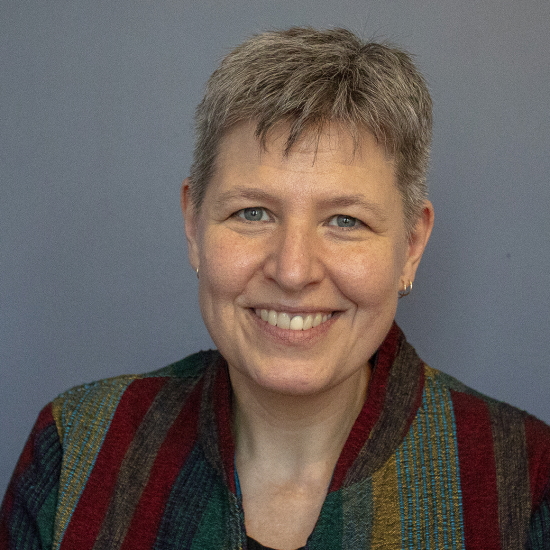
Professor Karen Warkentin, Boston University, USA

Professor Karen Warkentin, Boston University, USAKaren Warkentin (they/them) is a Professor of Biology and of Women’s, Gender & Sexuality Studies at Boston University and a Research Associate at the Smithsonian Tropical Research Institute. They have studied phenotypic plasticity for over 30 years, focusing on the environmentally cued hatching of frog embryos as a system for integrative research that connects development, behaviour, and physiology in an ecological and evolutionary context. For 20 years, their teaching has addressed questions of sexual diversity through evolutionary and developmental perspectives. They organized a 2015 symposium on 'Diversity, Plasticity, and the Science of Sexuality' and, more recently, have given multiple plenary talks integrating their frog plasticity work with insights from gender and sexuality studies and information about the value of human diversity for science. Their research has been funded by the US National Science Foundation, Smithsonian, and National Science and Engineering Research Council of Canada. |
| 12:15-12:30 |
Discussion
|
| 12:30-13:30 |
Lunch
|
Chair

Professor Vincent Savolainen, Imperial College London, UK

Professor Vincent Savolainen, Imperial College London, UK
Professor Vincent Savolainen is the Director of the Georgina Mace Centre for the Living Planet, a College initiative that brings together a multi-disciplinary group of researchers to tackle some of the greatest environmental challenges. Professor Savolainen is a Fellow of the Zoological Society of London, Fellow of the Linnean Society of London, and a Fellow of the Royal Society of Biology. In 2006, he was awarded the Linnean Society’s Bicentenary Medal. In 2008, he was awarded a European Research Council Advanced Grant, and the following year a Royal Society Wolfson Research Merit Award. In 2014, he was elected a Member of EMBO. His group combines field ecology, molecular phylogenetics, and population genomic approaches to key societal challenges, from explaining the origin of biodiversity to finding solutions for its preservation in a rapidly changing world. Recent research also tackles the Darwinian paradox of sexual orientation.
| 13:30-14:00 |
Mathematical models of sexual orientation
From a biological point of view, heritable homosexual preferences represent an evolutionary puzzle as they lead to a reduced offspring production. A number of solutions to this puzzle have been proposed including overdominance, frequency-dependent selection via kin altruism, sexually antagonistic selection, fraternal birth order, and epigenetic marks. The author will review existing theoretical approaches focusing on the generality and limitations of their results. 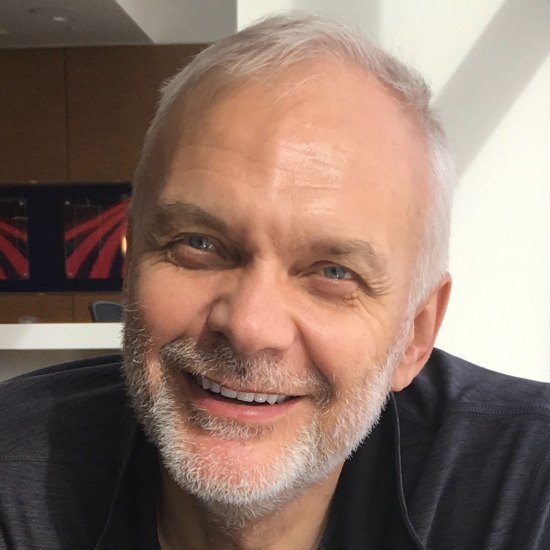
Professor Sergey Gavrilets, University of Tennessee, USA

Professor Sergey Gavrilets, University of Tennessee, USASergey Gavrilets is a Distinguished Professor of Ecology and Evolutionary Biology and Mathematics at the University of Tennessee Knoxville. He is also the head of the Centre for the Dynamics of Social Complexity at UTK, a Research Affiliate at the School of Anthropology, Oxford University, and an External Faculty at the Complexity Hub Sciences Vienna. Originally trained in physics and he is an expert in mathematical modelling of biological, cultural, and social evolution. In particular, he has used mathematical models to study sexual selection, sexual conflict, and sexual orientation. His research has been supported by the NIH, the NSF, the DOD, and the John Templeton Foundation. He is the recipient of the President’s Award from the American Society of Naturalists and is a Guggenheim Fellow and a Fellow of the American Academy of Arts and Sciences. |
|---|---|
| 14:00-14:15 |
Discussion
|
| 14:15-14:45 |
Prenatal androgen exposure and human sexual orientation
Thousands of experimental studies of non-human mammals have documented the effects of early androgen exposure on later sex-related behaviour. Similar experimental studies of early androgenic influences on human behaviour would not be ethical. Studies of people with genetic syndromes causing unusual androgen exposure prenatally, however, suggest that androgens exert similar influences on human behaviour. For instance, women exposed to high concentrations of androgens prenatally because they have congenital adrenal hyperplasia (CAH) show reduced female-typical and increased male-typical behaviour. Among other outcomes, they are less likely than other women to report being exclusively or almost exclusively heterosexual. Similarly, XY individuals who experience no effective androgen exposure because they have complete androgen insensitivity syndrome (CAIS) almost always report female-typical sexual orientation. These findings suggest that genetic factors that influence androgens or their ability to act during early development contribute to inter-individual variability in human sexual orientation. 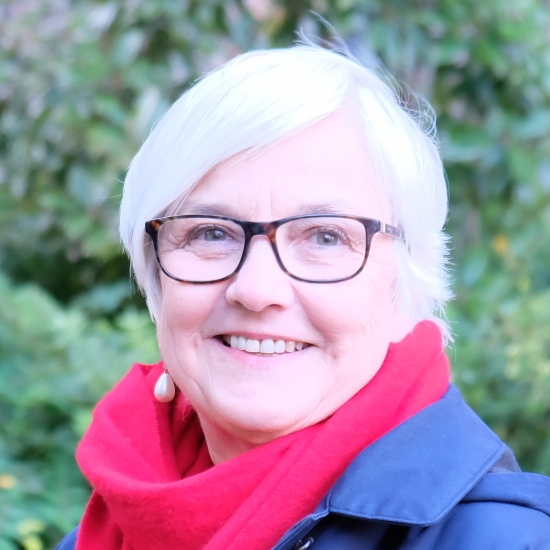
Melissa Hines, Professor of Psychology, University of Cambridge, Cambridge, UK

Melissa Hines, Professor of Psychology, University of Cambridge, Cambridge, UKMelissa Hines is Professor of Psychology at the University of Cambridge, where she directs the Gender Development Research Centre (GDRC). Professor Hines and the GDRC investigate hormonal and sociocultural influences on gender development. Outcomes of interest include children’s toy and activity preferences, as well as sexual orientation, gender identity, personality, and cognition. A current project investigates brain structure and its relation to psychology and behaviour in people exposed to high concentrations of androgens before birth. Other recent projects include studies of hormonal influences during early infancy (mini-puberty) on later behaviour, and studies of children’s gender-related toy and colour preferences in small-scale societies with limited exposure to global culture. Professor Hines was educated at Princeton University and at the University of California, Los Angeles. She is a Past-President of the International Academy of Sex Research and has authored over a hundred peer-reviewed journal articles, as well as the book, “Brain gender”. |
| 14:45-15:00 |
Discussion
|
| 15:00-15:30 |
Break
|
| 15:30-16:00 |
Ancestral sex-role plasticity facilitates the evolution of same-sex sexual behaviour
The evolution of same-sex sexual behaviour (SSB) is an enigma because such behaviour cannot directly result in reproduction. Theoretical papers predict that indiscriminate mating is an evolutionary driver of SSB, calling for empirical work to test this hypothesis. Professor Bailey will discuss a study showing that same-sex pairing in termites is maintained not by indiscriminate mating but by behavioural plasticity with accurate sexual discrimination. Female and male termites can express the behaviour of the other sex, which contributes to maintaining pair coordination. Phylogenetic comparative analysis suggests that such behavioural flexibility was inherited from an ancestral lineage. The findings show that SSB can evolve with highly accurate sex discrimination, combined with sex-role plasticity, and they challenge recent arguments for a prominent role of indiscriminate mating behaviour in the evolutionary origin and maintenance of SSB across diverse taxa. 
Professor Nathan Bailey, St Andrews University, UK

Professor Nathan Bailey, St Andrews University, UKProfessor Nathan W Bailey is an evolutionary biologist at the University of St Andrews. He studies adaptive evolution from behavioural and genomic perspectives with particular interest in factors that promote rapid evolutionary change in response to extreme selection pressure. Often such pressure arises from variation in social environments, and his interest in social behaviour has led to investigations into the origins and maintenance of same-sex sexual behaviour in animals. |
| 16:00-16:15 |
Discussion
|
| 16:30-18:00 |
Poster session
|
Chair

Professor Sergey Gavrilets, University of Tennessee, USA

Professor Sergey Gavrilets, University of Tennessee, USA
Sergey Gavrilets is a Distinguished Professor of Ecology and Evolutionary Biology and Mathematics at the University of Tennessee Knoxville. He is also the head of the Centre for the Dynamics of Social Complexity at UTK, a Research Affiliate at the School of Anthropology, Oxford University, and an External Faculty at the Complexity Hub Sciences Vienna. Originally trained in physics and he is an expert in mathematical modelling of biological, cultural, and social evolution. In particular, he has used mathematical models to study sexual selection, sexual conflict, and sexual orientation. His research has been supported by the NIH, the NSF, the DOD, and the John Templeton Foundation. He is the recipient of the President’s Award from the American Society of Naturalists and is a Guggenheim Fellow and a Fellow of the American Academy of Arts and Sciences.
| 09:00-09:30 |
Genomic evidence consistent with antagonistic pleiotropy may help explain the evolutionary maintenance of same-sex sexual behaviour
Human same-sex sexual behaviour (SSB) is heritable, confers no obvious direct reproductive or survival benefit and can divert mating effort from reproductive opportunities. This presents a Darwinian paradox: why has SSB been maintained despite apparent selection against it? Professor Verweij will present results from a study showing that genetic effects associated with SSB may, in individuals who only engage in opposite-sex sexual behaviour (OSB individuals), confer a mating advantage. A genome-wide association study on 477,522 individuals was performed, revealing five loci significantly associated with SSB. In aggregate, these genetic variants accounted for 8 to 25% of individual differences in SSB. Using the results from this study (the genome-wide effect estimates) and results from a genome-wide association study on number of opposite-sex sexual partners in 358,426 individuals, the authors show that, among OSB individuals, genetic effects associated with SSB are associated with having more opposite-sex sexual partners. Simulation analyses suggest that such a mating advantage for alleles associated with SSB could help explain how it has been evolutionarily maintained. Several important caveats will be discussed. 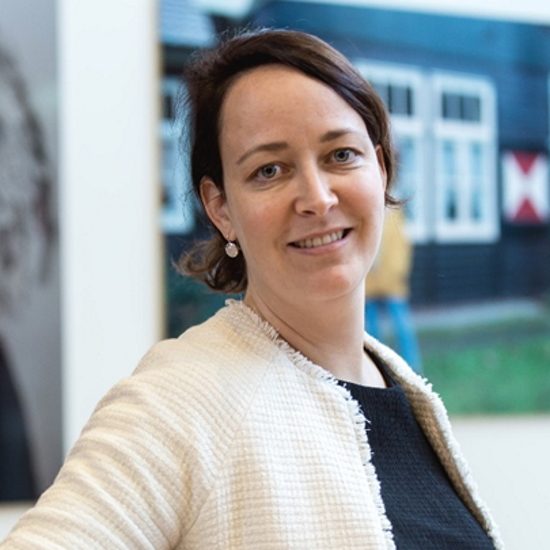
Professor Karin Verweij, Amsterdam UMC, University of Amsterdam, The Netherlands

Professor Karin Verweij, Amsterdam UMC, University of Amsterdam, The NetherlandsProfessor Karin Verweij is a behavioural geneticist interested in unravelling the roots of individual differences in human behaviour. She employs interdisciplinary research (combining complex trait genetics with psychiatry and evolutionary psychology) to solve fundamental questions about the etiology of substance use, psychiatric disorders, and other human behaviour. Much of her research focuses on the question why some individuals are more susceptible than others to develop an addiction or mental illness. Increased knowledge of genetic etiology may contribute to early detection and prevention of mental illness and should guide personalised treatment. Professor Verweij completed her PhD at the Genetic Epidemiology laboratory of the Queensland Institute of Medical Research, Australia, after which she worked as geneticist at various universities in the Netherlands, Sweden and Australia. In 2018 she was appointed professor of ‘Genetics in Psychiatry’ at Amsterdam UMC-UvA. |
|---|---|
| 09:30-09:45 |
Discussion
|
| 09:45-10:15 |
Genetically identical twins discordant for sexual orientation: potential reasons for their differences
About 75% of genetically identical twins who are homosexual have heterosexual co-twins, and it is largely unknown what causes their difference. However, the majority of past work with such twin pairs was based on self-reports, which can be biased, and how these twins truly differ remained uncertain. The author will summarise research from his lab showing that these twins differ in behavioural, physiological, and anatomical traits linked to sexual orientation: gender-nonconformity, genital arousal, and finger length ratios, respectively. Dr Rieger will then propose a mechanism that explains their different development. About 30% of identical twins develop with separate placentas. Maternal androgens or antibodies could diffuse differently through these placentas, affecting the differentiated development of the twins. The author will also propose a study design to indirectly test this hypothesis. 
Dr Gerulf Rieger, University of Essex, UK

Dr Gerulf Rieger, University of Essex, UKGerulf Rieger obtained a MSc in Biological Anthropology from the University of Zurich in Switzerland and a PhD in Personality Psychology from Northwestern University, Evanston, Illinois. Gerulf had a teaching position at Northwestern University and was a research fellow in the Department of Human Development at Cornell University before joining the Social and Health Psychology Group at the University of Essex. |
| 10:15-10:30 |
Discussion
|
| 10:30-11:00 |
Break
|
| 11:00-11:30 |
Homosexual preference in humans: an evolutionary approach
Male homosexual orientation remains a Darwinian paradox, as there is no consensus on its evolutionary (ultimate) determinants. Much work in the previous decades has focused on kin selection, with the conclusion that this explanation alone seems insufficient and cannot explain the origin or the maintenance of same-sex sexual preference in our species. There are several other evolutionary explanations, such as the pleiotropic effects which are now scrutinized, although there is no consensus yet on the nature of the advantageous trait that would be selectively favoured and linked to same-sex attraction. One intriguing feature of homosexual men is their higher male birth rank compared to heterosexual men, best explained by a fraternal birth order effect, and not by a pleiotropic effect on female fertility. However, the effect of male birth order on sexual orientation requires an evolutionary explanation. An overall picture of possible evolutionary determinants of same-sex orientation will be presented. 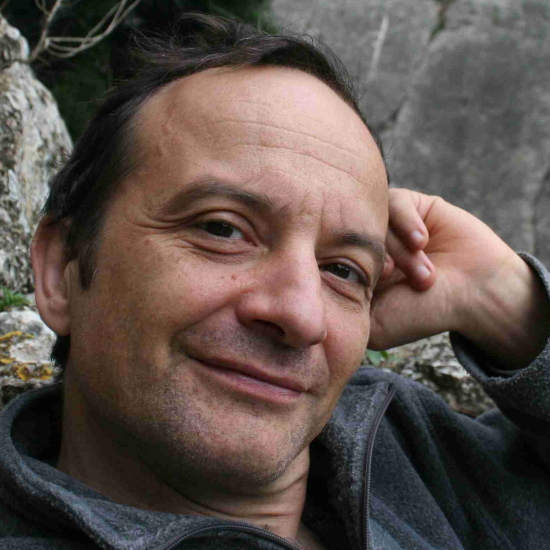
Michel Raymond, CNRS scientist, University of Montpellier, France

Michel Raymond, CNRS scientist, University of Montpellier, FranceMichel Raymond is a CNRS research director at the Institute of Evolutionary Sciences, Montpellier, France, and the head of the Evolutionary Anthropology team. He has first worked on genetics of adaptation before switching to evolutionary anthropology. In humans, he has worked on e.g. local adaptation, the evolution of handedness, the evolution menopause, and the evolution homosexual orientation. His scientific work (>200 papers in international journals) has been cited more than 40.000 times (H > 70). |
| 11:30-11:45 |
Discussion
|
| 11:45-12:15 |
Large-scale GWAS reveals insights into the genetic architecture of same-sex sexual behaviour
Twin and family studies have shown that same-sex sexual behaviour is partly genetically influenced, but previous searches for specific genes involved have been underpowered. The authors performed a genome-wide association study (GWAS) on 477,522 individuals, revealing five loci significantly associated with same-sex sexual behaviour. In aggregate, all tested genetic variants accounted for 8 to 25% of variation in same-sex sexual behaviour, only partially overlapped between males and females, and do not allow meaningful prediction of an individual’s sexual behaviour. Comparing these GWAS results with those for the proportion of same-sex to total number of sexual partners among non- heterosexuals suggests that there is no single continuum from opposite-sex to same-sex sexual behaviour. Overall, the findings provide insights into the genetics underlying same-sex sexual behaviour and underscore the complexity of sexuality. 
Dr Andrea Ganna, Institute for Molecular Medicine, University of Helsinki, Finland

Dr Andrea Ganna, Institute for Molecular Medicine, University of Helsinki, FinlandAndrea is a FIMM-EMBL group leader at Institute for Molecular Medicine Finland (FIMM) and a research associate at Massachusetts General Hospital, Harvard Medical School. Andrea's research interests lie at the intersection between epidemiology, genetics, and statistics. He leads a diverse group of 18 researchers including biologists, mathematicians, and medical doctors. He is a winner of an ERC starting grant and the Leena Peltonen Prize for Excellence in Human Genetics. He is co-leading two major international consortia: the COVID-19 host genetic initiative, the largest human genetic study of COVID-19, and the INTERVENE consortium, which aims to integrate AI and human genetics tools for disease prevention and diagnosis across biobanks in Europe. He has also initiated the FinRegistry project, one of the most comprehensive registry-based health studies in the world. His research vision is to integrate genetic data and electronic health records to enhance the early detection of common diseases and improve public health interventions. |
| 12:15-12:30 |
Discussion
|
Chair

Professor Karen Warkentin, Boston University, USA

Professor Karen Warkentin, Boston University, USA
Karen Warkentin (they/them) is a Professor of Biology and of Women’s, Gender & Sexuality Studies at Boston University and a Research Associate at the Smithsonian Tropical Research Institute. They have studied phenotypic plasticity for over 30 years, focusing on the environmentally cued hatching of frog embryos as a system for integrative research that connects development, behaviour, and physiology in an ecological and evolutionary context. For 20 years, their teaching has addressed questions of sexual diversity through evolutionary and developmental perspectives. They organized a 2015 symposium on 'Diversity, Plasticity, and the Science of Sexuality' and, more recently, have given multiple plenary talks integrating their frog plasticity work with insights from gender and sexuality studies and information about the value of human diversity for science. Their research has been funded by the US National Science Foundation, Smithsonian, and National Science and Engineering Research Council of Canada.
| 13:30-14:00 |
Delineating distinct bio-developmental pathways of sexual orientation
While prenatal androgens largely mediate sexual behaviour and preferences in non-human animals, the evidence has been mixed when it comes to human sexual orientation and gender expression. In this talk, the author will present data suggesting that there are multiple biological pathways underlying sexual orientation among humans, and early androgens exposure contributes to the sexual orientation and gender expression of a subset of gay men. The author approaches this research from a translational approach evaluating how the principles gained in studying sexual differentiation of the brain and behaviour in rodent models may apply to humans. As such, Dr Swift-Gallant will also present preliminary work from their rodent models suggesting that alternate mechanisms, such as the gut microbiota, contribute to socio-sexual behaviours and thus may be considered in understanding the biological underpinnings of same-sex sexual orientation in humans. 
Ashlyn Swift-Gallant, Assistant Professor of Psychology, Memorial University of Newfoundland, Canada

Ashlyn Swift-Gallant, Assistant Professor of Psychology, Memorial University of Newfoundland, CanadaDr Swift-Gallant studies how the processes of sexual differentiation shape the brain and behaviour in both rodent models and humans. Prior to joining Memorial University of Newfoundland (MUN) in 2018 as an Assistant Professor, Dr Swift-Gallant completed her doctoral training with Dr Ashley Monks at the University of Toronto and her postdoctoral work with Drs Marc Breedlove and Cynthia Jordan at Michigan State University. Her lab at MUN uses transgenic mouse models to address androgen dose and site of action for both neurotypical and neurodivergent social development. Her lab also evaluates the translational value of their rodent work for humans by studying the biological basis for sex differences in neurodevelopmental and mental health disorders as well as considers the biodevelopment of same-sex sexual orientation to understand how sexual differentiation shapes the human brain and behaviour. |
|---|---|
| 14:00-14:15 |
Discussion
|
| 14:15-14:45 |
The evolution of same-sex sexual orientation: recent insights from Thailand
In Thai culture, same-sex attracted individuals are often considered to be gender-nonbinary and referred to as pheet thii saam, which translates as “third sex/gender.” Males who display androphilia (ie, sexual attraction to adult males) present as either relatively more masculine (ie, gay) or as transfeminine (ie, sao praphet song, which translates as “a second kind of woman”). Females who display gynephilia (ie, sexual attraction to adult females) present as relatively more feminine (ie, lesbian), transmasculine (ie, tom, which has a similar connotation as “tomboy”), or as feminine individuals who are romantically/sexually attracted towards toms (ie, dee). This presentation will detail three recent and ongoing evolutionary studies focusing on same-sex sexual orientation in which these groups of pheet thii saam individuals were compared with heterosexual men and women. Study 1 focused on the numbers of offspring produced by study participants and demonstrates lowered direct reproduction among pheet thii saam relative to their heterosexual counterparts. Study 2 tested the kin selection hypothesis, which posits that same-sex attracted individuals offset their lack of reproduction by allocating kin-directed altruism towards close kin, thus enhancing inclusive fitness. Study 3 tested the balancing selection hypothesis, which posits that the relatives of same-sex attracted individuals exhibit increased reproduction, which could offset same-sex attracted individuals’ lack of reproduction. Together, findings from these studies add to existing empirical work on the evolutionary maintenance of same-sex sexual attraction and help to delineate possible evolutionary differences based on the sex and gender expression of same-sex attracted individuals. 
Dr Francisco Gomez Jimenez, University of Toronto, Canada

Dr Francisco Gomez Jimenez, University of Toronto, CanadaFrancisco is a Postdoctoral Fellow at the University of Toronto Mississauga working with Dr Doug VanderLaan to understand the cultural variability, development, and evolutionary origins of sexual and gender diversity. Prior to this, Francisco obtained a PhD at the University of Lethbridge with Dr Paul Vasey. Francisco’s evolutionary research has tested various hypotheses seeking to understand how genes associated with exclusive same-sex sexual attraction can persist throughout evolutionary time despite this trait reducing reproduction. This research was conducted among the Istmo Zapotec of Oaxaca, Mexico, where he studies same-sex attracted males who identify as part of a nonbinary gender locally known as muxes. His work demonstrates that muxes exhibit elevated kin-directed altruism and larger family sizes, which could potentially offset their lack of reproduction. Francisco is currently testing whether similar traits are exhibited by same-sex attracted males and females in Thailand. |
| 14:45-15:00 |
Discussion
|
| 15:00-15:30 |
Break
|
| 15:30-16:00 |
Is Sexual Orientation a Spandrel? Reframing genetic-evolutionary understandings of sexual diversity
For over 50 years, scientists across multiple disciplines (genetics, anthropology, endocrinology, psychology) have tried - but failed - to nail down the cause of human same-gender sexual expression. Although studies confirm that same-gender sexual behaviour is genetically influenced, the magnitude of this influence appears relatively small, accounting for only 8-25% of the population variance in same-gender sexual behaviour (Ganna et al, 2019). Further complicating matters is the fact that “same-gender sexual expression” does not appear to represent a single phenotype or genotype. Subtypes of same-gender sexuality (early developing, later developing, exclusive, bisexual, fluid, stable) have been documented by anthropologists and psychologists for decades, and recent genetic research suggests that these subtypes may correspond to distinct genetic profiles. Ganna’s (2019) study of the full genomes of over 450,000 individuals made the startling discovery that the genes associated with ever having pursued same-gender sexual behaviour were not the same as the genes associated with degrees of same-gender sexual behaviour. This finding directly contradicts the notion that same-gender and other-gender orientations represent two ends of a single genetic continuum, and suggests scientists may have failed to properly characterize the phenotype of sexual orientation. An additional weakness of prior genetic-evolutionary research on sexual orientation is the inattention to gene-environment interactions, particularly those involving childhood adversity. One of the most robustly documented environmental differences between individuals with same-gender sexual behaviour and individuals without such behaviour is exposure to childhood adversity, including financial hardship, neighbourhood violence, residential instability, physical/sexual abuse, and the unavailability of reliable adult care and protection. From an evolutionary perspective, there is arguably no category of environmental experience as influential on human genetic expression as childhood threat and nurturance. Decades of developmental research has shown that the children’s brains are exquisitely sensitive to such experiences, and decades of evolutionary research has explained why: Early life experiences of threat and nurturance are treated by the developing human brain as “hints” about the types of survival and reproductive challenges a child may face in the future. Accordingly, the fact that same-gender-attracted adults report twice as much childhood adversity as heterosexuals is simply too significant to ignore, especially for scientists grounded in evolutionary models of human development. We need genetically-informed understandings of sexual diversity that adequately capture the full range of human sexual phenotypes and the full range of gene-environment interactions that may shape sexual development. This broadened perspective may lead us to retire the notion of “sexual orientation” altogether, and to question our own culturally-grounded assumptions about sexual “traits.” Gould and Lewontin famously cautioned evolutionary biologists against over-interpreting salient patterns in natural phenomena, noting that some of these patterns are simply “spandrels,” defined as phenotypic by-products of other evolved traits and processes that we fail to observe. In light of this caution, we should actively investigate the possibility that same-gender sexual expression is an “accidental” form of human patterning, whose genetic underpinnings have little to do with either sexual differentiation or sexual reproduction. 
Professor Lisa Diamond, University of Utah, USA

Professor Lisa Diamond, University of Utah, USALisa M Diamond is Distinguished Professor of Psychology and Gender Studies at the University of Utah. She received her PhD in Human Development from Cornell University in 1999. For nearly three decades, Dr Diamond has studied the development and expression of gender and sexual diversity over the lifespan. She is best known for her research on sexual fluidity, which describes the capacity for individuals to experience unexpected shifts in sexual identity and expression over time. More recently, she has turned her attention to the evolved psychobiological mechanisms through which stigma harms the mental and physical health of sexually-diverse and gender-diverse (LGBTQ+) populations. Her current work focuses on the evolved significance of social safety (unconditional social connection, inclusion, belonging and protection) for human health and development, and the neuroimmune pathways through which deficits in social safety foster mental/physical health vulnerabilities in stigmatized or socially marginalized populations. |
| 16:00-16:15 |
Discussion
|
| 16:15-17:00 |
Panel discussion/overview
|
